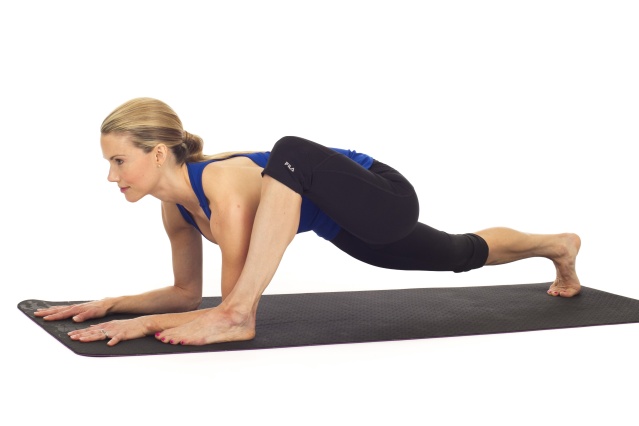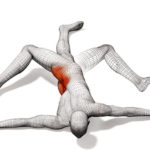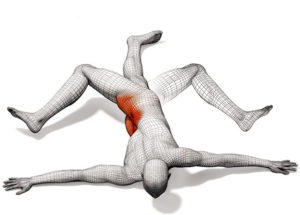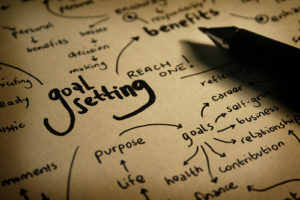Coach Oz here,
For many of us, we have either experienced or are currently experiencing tightness/pain in our joints and muscles. This can be a result of acute injuries, chronic dysfunction, improper or over-training, and/or our everyday activities. Today I would just like to touch on some of the common issues I have seen with many of my clients over the past 10 yrs. For each problem area I will explain the probable cause and advise training solutions you should consider implementing to your weekly routine. (Please note if you experience discomfort that inhibits your functioning to any degree, you should have it assessed from a health professional such as a GP/physio/RMT/Chiro prior to initiating the suggested movements below).
Problem area: Tight neck / upper back & shoulders
Training solution: Strengthen the lower traps
The lower traps are most often lengthened and weak due to poor thoracic spine mobility and overactive upper traps. Think about it, if your day job involves prolonged sitting at a desk then, naturally overtime, you will develop a rounded upper back and shrugged shoulders as a result of completing your daily job tasks. This compensation creates unstable scapulae (shoulder blades) causing dysfunction in the shoulders and upper back/neck regions which can lead to pain and stiffness. When completing push-pull movements, ALWAYS RETRACT AND DEPRESS your scapulae before you initiate the movement. In terms of warm-up and strength exercises for the lower traps be sure to include the following: Scapulae wall slides, prone Y/W/L, chest-supported reverse flys, chin-ups, & cable lat pulldown.
Problem area: Poor posture & painful shoulders
Training solution: Focus on including more pull vs push movements
Most daily activities force us to have our arms/hands out in front of our chest (i.e., office work, driving, eating, yard-work) which causes tightness/over-activeness of the chest and shoulder joint muscles and weakness in the middle/lower traps and rhomboids. This imbalance draws the shoulders forward and causes misalignment of the shoulder joint and upper torso thus resulting in poor posture. From a training standpoint, most people tend to focus more on “pushing” movements like chest and shoulder style presses with limited attention placed on pulling motions like pull ups and rows. Perhaps this is because many people can’t complete a pull-up/chin-up or pushing movements are viewed the “norm” when it comes to resistance-based exercises. The key here is to first analyze your posture and shoulder function and then your weekly workout routine by assessing the percentage of pushing vs pulling-based exercises. If there is dysfunction then focus on a 2/3 : 1 ratio of pulling vs pushing-based exercises by including assisted band chin-ups/bodyweight chin-ups, TRX rows, seated one-arm rows, cable rows/face pulls, DB bent over rows, & reverse flys/ prone T & Ys.
Problem area: Lower back tightness/pain
Training solution: Strengthen core/gluts and increase hip mobility
I cannot tell you how many times clients/friends of mine have asked me “my back is tight, can you please show me a stretch for the low back?” A simple solution would be to show a few stretches such as a child pose, knee hugs or a cat/camel pose. However, doing this does not get to the root of the problem despite possibly reducing some mild form of tightness in the lower back. To understand the low back you must first know the role of the lower spine and hip regions. The stability-mobility continuum states that hips need to have ample mobility whereas the lower back (or core) should have sufficient stability (or functional stiffness). Having poor core stability, weakness in the gluts and/or tightness in the hips (hamstrings/IT band/hip flexors/quads/adductors/gluts) CAUSES lower back pain and tightness.
From a training standpoint, look to include variations of the front/side planks, stability ball bridges, cable pallof presses, squats, deadlifts, and hip thrusts to strengthen the core and gluts. To increase mobility in the hips, include foam rolling and movements such as striders, overhead squat, hip flexor movements as part of your warm-up in addition to static stretching of the hips (the band is optional) following your workout.
If you need demonstrations for any of the above listed exercises, just type the exercise into YouTube. If you are looking for a personalized program, please contact me directly as I offer online coaching/programming.
Hope this info helps you to train smarter and move more effectively. I ask that you please SHARE this post with your friends/family and to like my FB page “Wellness By Oz” – THANKS!!
Coach Oz





